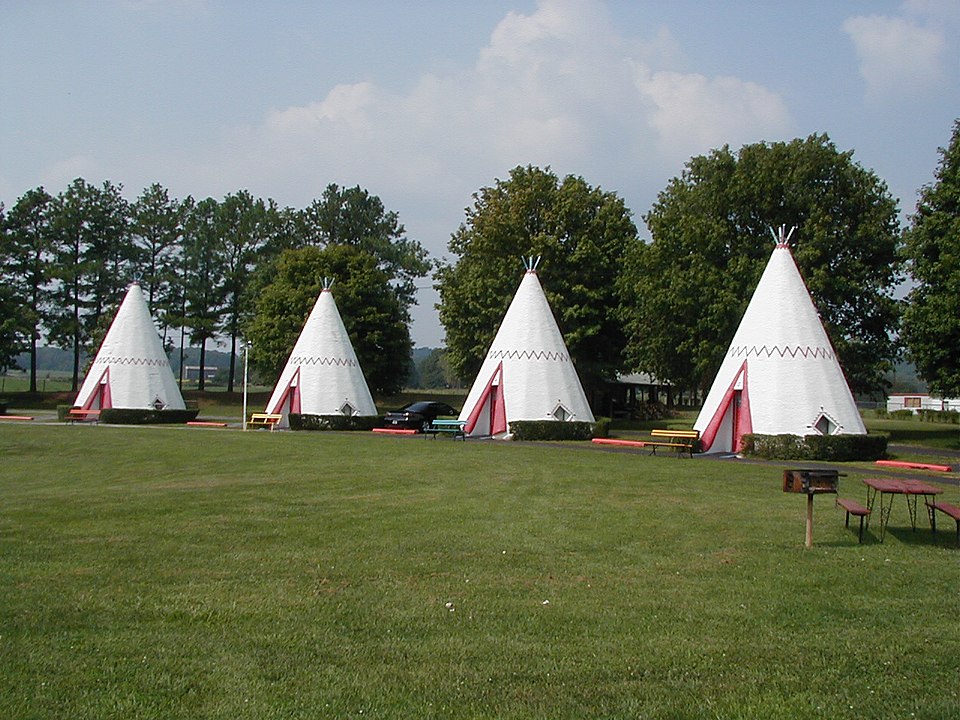|
Among the season’s many cancellations was a friend’s planned family vacation at Mammoth Cave, Kentucky. Before their intended departure, I misunderstood him to say they would sleep in the only surviving wigwam east of the Mississippi.
Huh? The small bark winter houses of the eastern and midwestern woodlands weren’t exactly durable. Wisconsin has several replicas. If an authentic original survived, I can’t imagine tourists being allowed to sleep there. West of the Mississippi, tepees, hogans, and pueblos were more common. Kentucky’s mis-named Wigwam Motel* is on the National Register of Historic Places, as are its two surviving siblings in Arizona and California. They’re remnants of 1930s and ’40s pseudo-Indian kitsch, akin to cigar-store Indians and now-controversial sports team names and mascots. Preserve traces of our imperfect past, or expunge it out of respect? Souvenir war bonnets, Confederate statues, anti-Semitism in Shakespeare, gendered adventures in Peter Pan: There’s no one easy answer. Museums, classrooms, and historical parks hold thoughtful spaces to preserve and respect. I hope the Wigwam Motel stays in business, with a conspicuous historical marker near the entrance to put the kitsch in context. * Image: The "wigwams" look more like tepees.
2 Comments
The teepees are commemorated in the movie Cars, depicted as large construction cones; the Cozy Cone Motel. I think this "kitsch" you've mentioned is a good reminder about how far we've come in recognizing racism, while showing that our journey must go farther still. R
Reply
4/6/2020 08:28:18 pm
Thanks for telling me about the Cozy Cone Motel. Clearly I should see more movies! We've come a long way, and yet even among the well-meaning (my bias is showing) it can be confusing exactly what to do about it in some cases. Should anything be grandfathered in?
Reply
Leave a Reply. |
AuthorI'm a historian who writes novels and literary nonfiction. My home base is Madison, Wisconsin. Archives
July 2024
|

 RSS Feed
RSS Feed